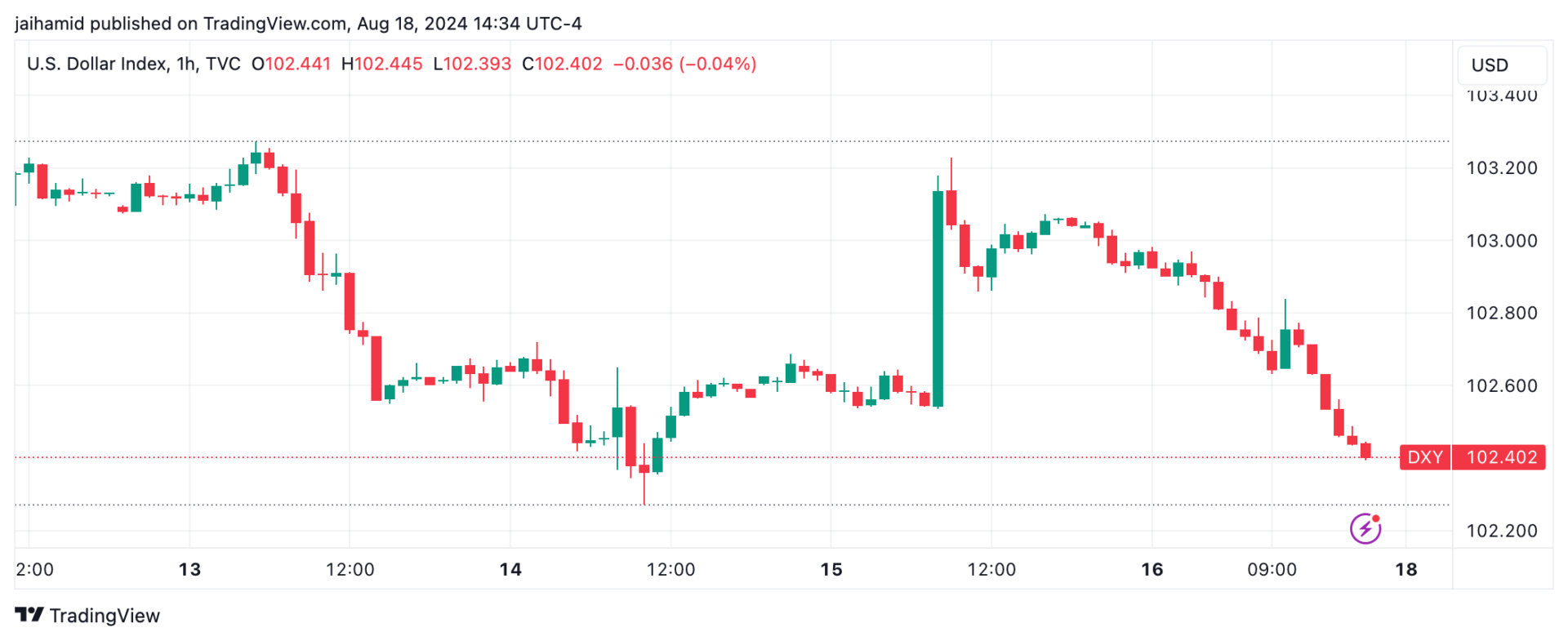The dollar got knocked down against the yen on Friday, losing ground against other major currencies, thanks to some pretty ugly housing data out of the U.S.
Investors, always on the lookout for what the Fed might do next with interest rates, didn’t like what they saw.
U.S. single-family home construction took a nosedive in July, with higher mortgage rates and skyrocketing home prices scaring off potential buyers. The market’s already limping, and this fresh setback didn’t help.

The greenback dropped by 0.96% against the yen, hitting 147.87, down from the two-week high of 149.40 it had reached just the day before. But don’t get too excited if you’re betting on the yen, cause it’s still on track for its worst weekly loss since June.
Why? Because the latest U.S. economic data has eased fears of a recession, giving traders a reason to bet on gradual rate cuts instead of something more drastic.
Yen stays weak
Last week was actually a dramatic turnaround from August 5th when the yen surged to 141.675 against the dollar after the Bank of Japan unexpectedly hiked rates.
That move, coupled with U.S. recession fears, had traders scrambling to unwind yen-financed carry trades.
But things calmed down after Shinichi Uchida, Bank of Japan’s deputy governor, tried to ease nerves by saying they wouldn’t mess with rates when the market’s this shaky.

Since then, it looks like traders have started rebuilding their short positions. Meanwhile, Japanese investors have been busy. In the week leading up to August 10th, they funneled the most money into long-term overseas bonds that we’ve seen in 12 weeks.
And guess what? Foreign investors turned buyers again, snapping up short-term Japanese debt after dumping it for eight straight weeks.
The stock market wasn’t left out either—foreigners scooped up around $3.5 billion in Japanese shares, reversing three weeks of net selling.

Earlier this month, weaker-than-expected payroll data had traders thinking a bigger, 50 basis-point cut was likely, with odds hitting 71%. But as of now, those odds have plummeted to just 25.5%, according to the CME Group’s FedWatch Tool.
Bitcoin stays steady
Switching gears to crypto, Bitcoin’s been showing some serious resilience, stabilizing after the global meltdown rattled markets and dragged it below $50,000.
The launch of spot Bitcoin ETFs in the U.S. this past January played a big role in keeping Bitcoin afloat during the chaos.
Since their debut, these ETFs have pulled in about $17.5 billion in net inflows, boosting total assets in these funds to $53.5 billion as of press time.
The Grayscale Bitcoin Trust, which made the leap to an ETF earlier this year, has seen $1.9 billion in inflows since the switch. Even the new kid on the block, the Bitwise Bitcoin Fund, managed to attract $274 million in inflows.

Bitcoin started the year around $45,000 and saw a big rally, hitting a peak of about $71,000 in May. Since then, the price has been all over the place, but lately, it’s been holding steady in the $63,000 to $65,000 range.
This kind of stability is a bit of a surprise, especially after the volatility that usually follows the halving in April. But Bitcoin’s been hovering around $59,400 this past week.
That said, Bitcoin’s been through the wringer this year, but it’s showing signs of settling into a more stable pattern—at least for now.





